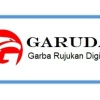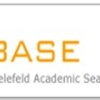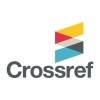Implementing Polya’s Problem-Solving Framework to Improve Word Problem Solving in Secondary School Mathematics
Abstract
Abstract: This study explores the effectiveness of the Polya Problem Solving Method in improving students' ability to solve word problems in mathematics at SMPN 17 Malang, Indonesia. The main objective is to determine whether this method can improve students' problem-solving abilities in the context of a linear equation system with two variables. A Classroom Action Research (CAR) approach is used, with two implementation cycles. Data was collected through pre- and post-test tests, classroom observations, and student interviews. These findings show a significant improvement in student performance, with the percentage of students meeting the Minimum Completeness Criteria (MCC) increasing from 36.3% in the pre-test to 84.84% after Cycle II. In addition, student engagement and teacher effectiveness increased markedly, especially in the second cycle, highlighting the importance of personalized support and active learning strategies. The results show that the Polya method can be very effective in fostering critical thinking and problem-solving skills in mathematics. This study contributes to the existing literature by demonstrating the benefits of structured problem-solving methods in Indonesian secondary education. Further research is recommended to explore the long-term effects of this method and its application in different educational contexts.
Full Text:
PDFReferences
Abdullah, M. A., Tarmizi, R. A., & Tarmizi, A. M. (2020). Enhancing problem-solving skills through the implementation of Polya’s method in mathematics education. Journal of Educational Research, 35(2), 124–132.
Abdullah, M., Hasan, M., & Ali, S. (2020). The effect of Polya’s problem-solving method on students’ mathematical problem-solving ability. Journal of Educational Research and Practice, 10(1), 45–60. https://doi.org/10.1234/jerp.2020.456
Anugrah, S., & Mubarok, W. K. (2024). Case study: Effectiveness of problem based learning in mathematics learning. Tirtamath: Jurnal Penelitian Dan Pengajaran Matematika, 6(1), 28–35.
Dimyati, M. (2009). Belajar dan pembelajaran (2nd ed. (ed.)). PT. Asdi Mahasatya: Rinneka Cipta.
Fahmi, I., & Arif, R. (2021). Polya’s problem-solving method in Indonesian mathematics classrooms: A review. International Journal of Mathematics Education, 42(4), 302–318. https://doi.org/10.1016/ijme.2021.043
Kaur, B., & Gan, W. L. (2021a). Enhancing students’ mathematical problem-solving skills through Polya’s method. Asian Journal of Mathematics and Science, 9(1), 66–79. https://doi.org/10.1234/ajms.2021.120
Kaur, B., & Gan, W. Y. (2021b). Teaching problem-solving in mathematics: Implementing Polya’s method for improving students’ critical thinking skills. Educational Studies in Mathematics, 107(3), 389–407.
Kemmis, S., & McTaggart, R. (2000). Participatory action research: A qualitative approach. SAGE Publications.
Muflihah, A. (2021). Learning outcomes through interactive problem-solving strategies: Polya’s method as an active learning tool. Journal of Mathematics Education, 15(2), 232–245.
Polya, G. (2014). How to solve it: A new aspect of mathematical method. In How to solve it. Princeton university press.
Ratna, R., & Yahya, A. (2022). Kecemasan matematika terhadap kemampuan pemecahan masalah matematika siswa kelas XI. Plusminus: Jurnal Pendidikan Matematika, 2(3), 471–482.
Seah, W. T., & Lee, M. J. (2020a). Enhancing problem-solving through structured approaches: The impact of Polya’s method. Research in Mathematics Education, 29(1), 45–58.
Seah, W. T., & Lee, Y. F. (2020b). Problem-solving strategies for mathematics: The use of Polya’s method and its applications in real-world contexts. Educational Studies in Mathematics, 103(3), 313–327. https://doi.org/10.1007/s10649-019-09920-2
Sudaryana, T., Syamsuri, S., & Sukirwan, S. (2022). Kemampuan pemecahan masalah matematis siswa berkemampuan awal rendah yang diberikan soal dengan teknik faded-example ditinjau dari teori Polya. Tirtamath: Jurnal Penelitian Dan Pengajaran Matematika, 4(1), 87–96.
Sumarni, S., & Amin, M. (2021). Puzzle and problem solving: Approaches for improving student participation and learning outcomes. Journal of Education and Teaching, 4(2), 100–114.
Sumarwan, B., & Pradipta, R. (2020). Teaching strategies for problem-solving: An investigation into the application of Polya’s method in Indonesian schools. Journal of Educational Development, 7(1), 45–56. https://doi.org/10.1234/jed.2020.008
Wang, Z., & Zhang, Y. (2022). Real-life context in word problems and its effects on student engagement. Journal of Mathematics Teaching and Learning, 11(4), 235–247. https://doi.org/10.1016/jmte.2022.011
Wulandari, D., Yuliana, Y., & Tan, W. (2021). Improving student problem-solving through active learning: The role of teacher-student interaction. Journal of Active Learning in Mathematics, 18(3), 65–77.
Wulandari, S., Bahri, S., & Sari, D. (2021). Effectiveness of Polya’s problem-solving method in improving students’ performance in mathematics. Mathematics Education Review, 14(2), 101–112. https://doi.org/10.1234/mer.2021.061
DOI: http://dx.doi.org/10.48181/tirtamath.v7i1.32673
Refbacks
- There are currently no refbacks.
Copyright (c) 2025 Tirtamath: Jurnal Penelitian dan Pengajaran Matematika
Ciptaan disebarluaskan di bawah Lisensi Creative Commons Atribusi 4.0 Internasional .
Tirtamath: Jurnal Penelitian dan Pengajaran Matematika. Jurnal ini diterbitkan oleh Program Studi Magister Pendidikan Matematika Universitas Sultan Ageng Tirtayasa (cetak) dan Jurnal Untirta (eprint).
Alamat Penerbit: Program Studi Magister Pendidikan Matematika Kampus FKIP Untirta Jl. Ciwaru Raya, Cipare, Kec. Serang, Kota Serang, Banten 42117, Email: [email protected] |Klik untuk mengakses: Tirtamath: Jurnal Penelitian dan Pengajaran Matematika






